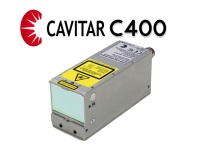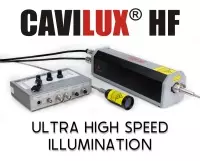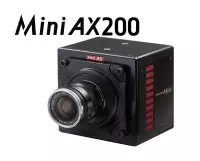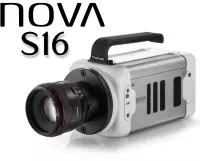- Description
- Specifications
- Videos
Cavitar’s Welding Camera enables the clear visualization in real time of welding processes in many welding applications. The core of the welding process emits very bright light that blinds the eye as well as normal camera systems. Without special visualization techniques the proper visual monitoring of a welding process is impossible. It is a complete, compact ready-to-use visualization solution including camera, integrated laser illumination and optics. It is applicable for all major arc welding processes like GMAW (MIG, MAG) and TIG. The technology is also suitable for all major beam welding processes like CO2 laser, fiber laser, diode laser, Nd:YAG laser and electron beam applications. This welding camera works alongside either a Cavitar HF or Smart illumination laser system.
Some benefits of using a welding camera are welders and operators can adjust the process based on the images in real-time. Images can be used for image analysis and automation or videos can be stored for quality documentation. Fast error detection reduces scrap. The system can be operated from a safe distance to the process and reduced risk of inhaling unhealthy welding fumes.
Target applications include:
- GMAW welding (MIG, MAG)
- TIG welding
- Hybrid welding (laser and arc welding)
- Laser welding (e.g. CO2, Nd:YAG, fiber and disc lasers)
- Electron beam
- Robot welding
- Semi-automated welding
- Linear welding
- Orbital welding
|
|
Related products
Export Disclaimer: Some goods on this site may be subject to US Export Regulations. Buyer agrees as one of the terms of purchase not to export such goods without having obtained and executed proper export licenses from the United States Government. Learn more.
Understanding the Main Features of Cavitar’s CAVILUX Smart and CAVILUX HF
| Feature | CAVILUX Smart | CAVILUX HF |
| Wavelength | 640 nm or 810 nm | 810 nm |
| Fiber core diameter | 5 mm or 3 mm | 1.5 mm |
| Minimum pulse duration with peak power reaching the specific pulse power | 30 ns | 100 ns |
| Minimum pulse duration with lower power than peak power | 10 ns | 50 ns |
| Max. duty cycle (High speed mode) | 0.1 % | 2 % |
| Max. repetition rate (30 ns pulses) | 33 kHz | - |
| Max. repetition rate (100 ns pulses) | 10 kHz | 200 kHz |
| Max. repetition rate (1 µs pulses) | 1 kHz | 20 kHz |
* with peak power reaching the specified pulse power
Wavelength
If visible light is necessary, then CAVILUX Smart 640 nm is the standard product (not taking into account possible customized solutions). The CAVILUX HF is equipped with a visible laser pointer beam (green light). Color cameras typically have an IR cut filter in front of the sensor which blocks 810 nm. Some cameras allow the removal of that filter and in this case CAVILUX 640 nm and 810 nm can be used.
Fiber core diameter
CAVILUX Smart has a fiber core diameter of either 5 mm (400 W @ 640 nm) or 3 mm (500 W @ 810 nm, 200 W @ 640 nm), whereas CAVILUX HF has a fiber core diameter of 1.5 mm. This means that CAVILUX HF has 4-11 times higher brightness than CAVILUX Smart. Higher brightness enables the illumination of a smaller area from a certain distance or, alternatively, the illumination of a certain area from a greater distance. CAVILUX Smart 200 W provides a higher brightness than CAVILUX Smart 400 W if the illuminated area is smaller than 3 mm.
Minimum pulse duration
The minimum pulse duration for CAVILUX Smart enabling full output power is ~30 ns. CAVILUX Smart can create pulse durations up to 10 ns but then the output power is lower. The minimum pulse duration for CAVILUX HF at full power is ~100 ns and 50 ns at lower output power. A very short pulse may be needed for removing motion blur when a small and fast-moving object is studied at high magnification. CAVILUX Smart has shorter rise and fall times than CAVILUX HF. Therefore, Smart can generate extremely short pulses (below 100 ns) more accurately than CAVILUX HF.






